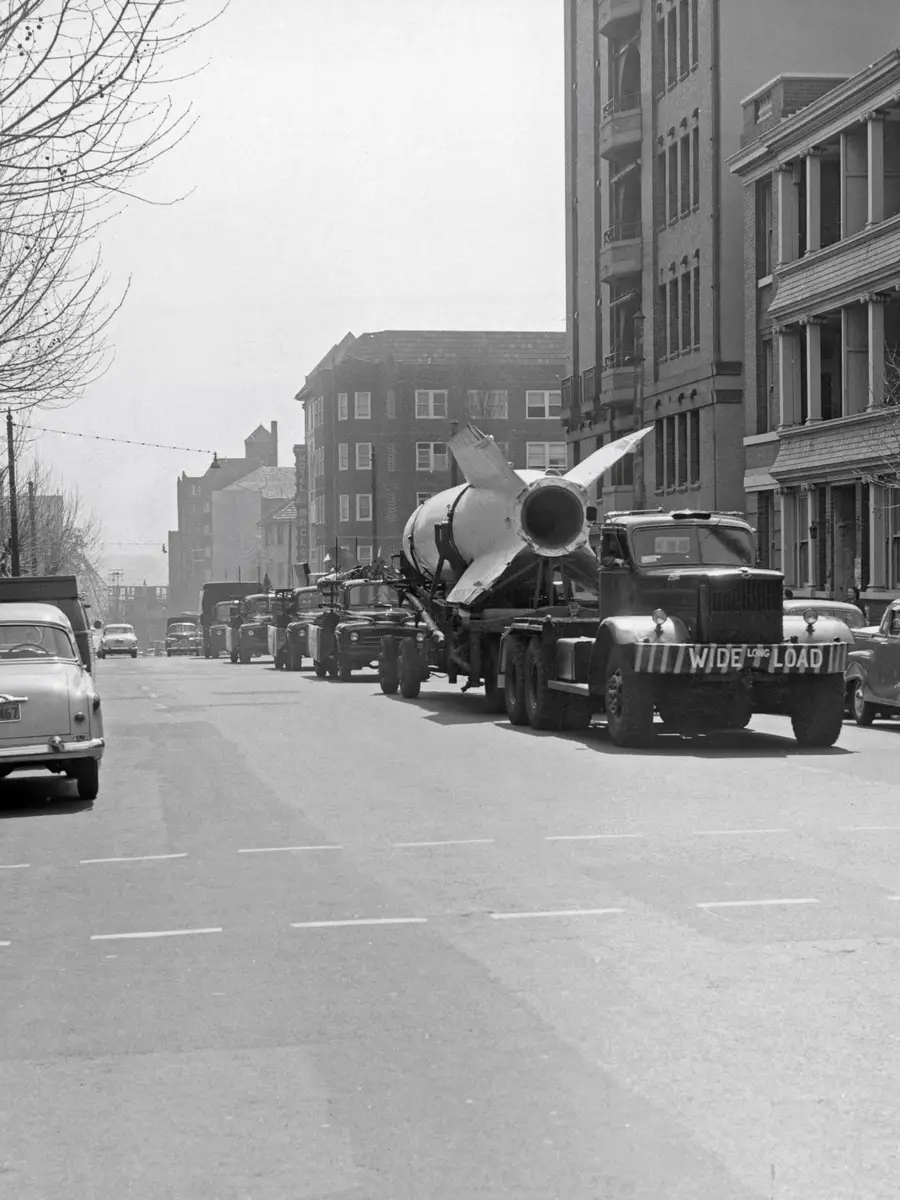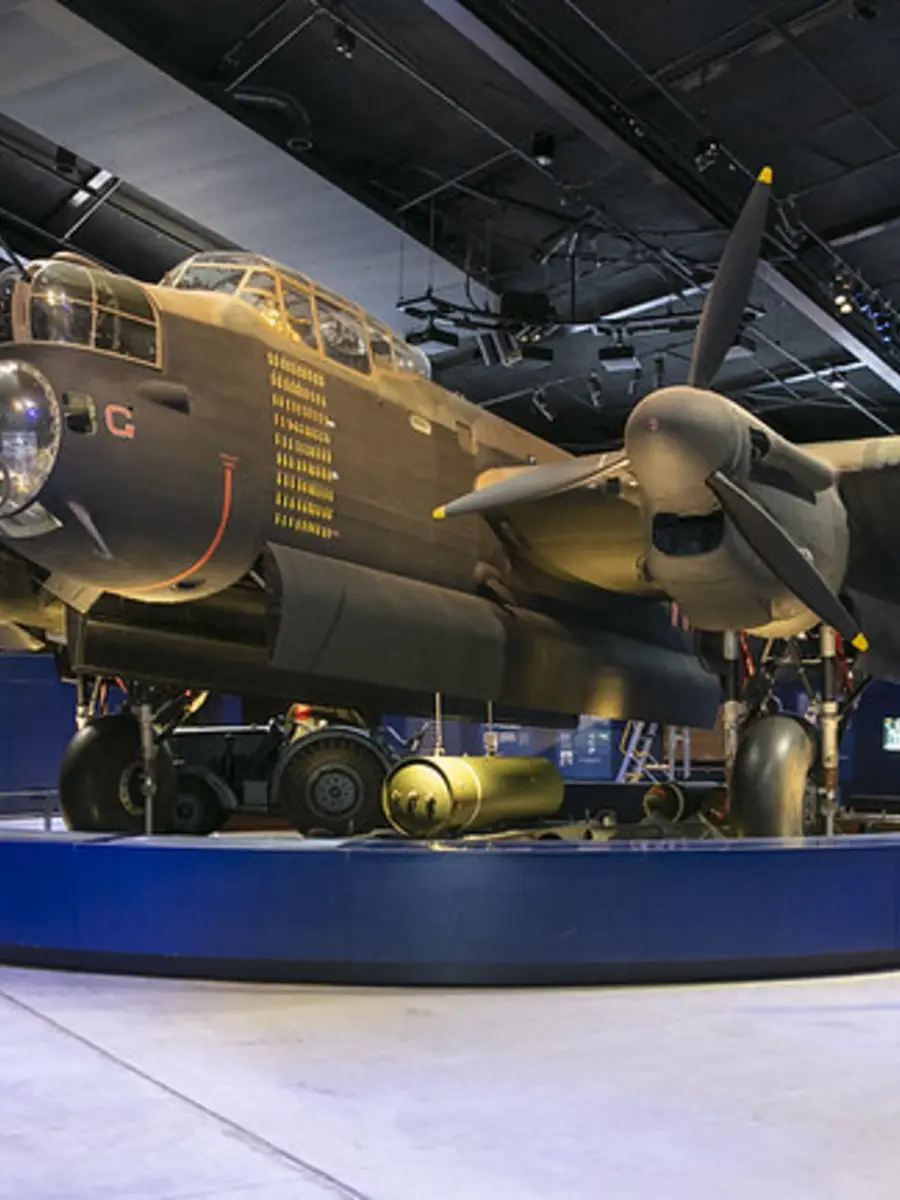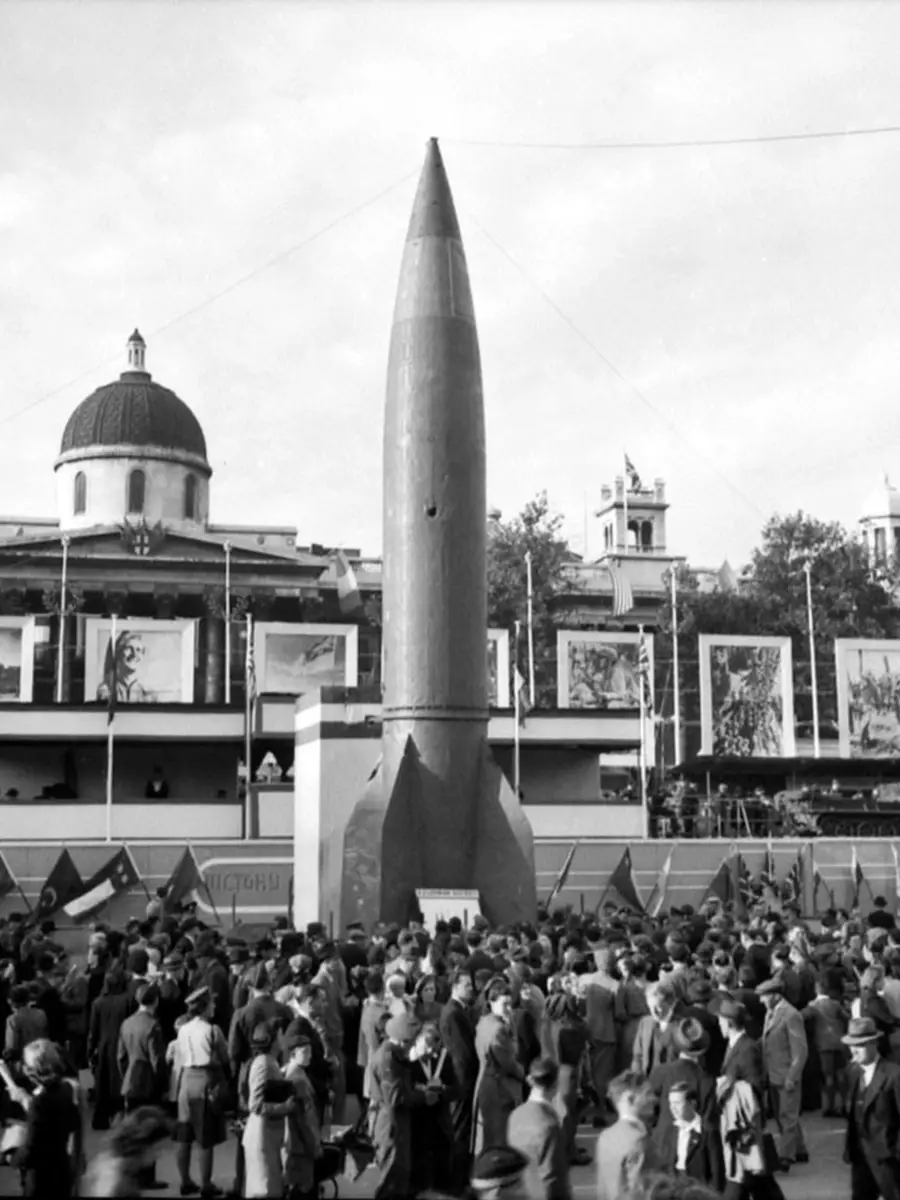For the first time, the Australian War Memorial will display a rare V2 rocket and its Meillerwagen trailer in the new galleries.
In this exclusive behind-the-scenes video, Dean Willis, Senior Conservator Large Technology Objects (LTO), explores the remarkable history of the V2 rocket, and the complex conservation work required to prepare it for display.
In 1947, two V2 rockets arrived in Australia, each with its own journey. One found its way to the Long Range Weapons Establishment in South Australia before joining the Memorial’s collection in 1957, accompanied by its Meillerwagen transport trailer. The other toured the country, finally settling at the Memorial in 1987.
Decades later, the Memorial’s LTO team had the monumental challenge of restoring the V2 rocket - preparing this object for display and preserving its powerful story for future generations.
This rocket was never completed by the Germans as a complete rocket. It was made by the British.
The V2 was always intended to be an instructional airframe, so what they’ve basically done is turned up where these were being built and picked all the good components that they wanted and then it was assembled using German scientists to get them back together again and make a few of them operational.
There’s about 19 rockets on the planet.
The war memorial didn’t get the rocket until 1957 and the rocket was actually dragged around Australia and it was basically shown at air shows.
When they were doing that, they actually broke its back, and so they put it on the miellerwagen and fixed it up so it looked straight and presentable.
The main problem was the object is made from mild steel and so it rusted very easily and wasn’t intended to last 60 – 80 – 100 years.
By 1957, it was pretty well toast on the inside due to corrosion. So it gave us an opportunity to repair all that and consolidate it and make it stable.
Ainslie and I basically started this in August 2020. The first thing was to do some research and find out how this actually came apart.
I had never pulled one apart before and it’s the only one that’s in the southern hemisphere.
We followed a document written in England about how they come apart and looked at many old films and things like that to determine where the parting lines were.
When we first started this object – you can’t get access to it, but the good thing about it was the fact that it was that badly corroded we could stick our hand in there to reach the bolts, to undo them…so we could get this centre section apart.
On this object you can see it’s sitting on the miellerwagen, where it actually sits on the miellerwagen is where the parting lines are, where it comes apart.
We weren’t sure how structurally sound it was so we pulled piece by piece off on the miellerwagen and used the miellerwagen as a support, to keep it all safe and straight and so we didn’t damage too much of it.
So it’s quite an integral part of the rocket and needs to be very very strong to support the rest of it. So that was the dilemma that we had with it.
We had to make a lot of components to add to it. We made a couple of hundred metres of longerons, we used about 13,000 rivets, we drilled 30,000 holes, we used 24 panels.
We also had to get some bulkheads manufactured to help us repair those bits and put it all back together.
So as the V2 evolved it had different schemes that they would use. So there was one where it was black and white, so when it launched they could watch it, and the trajectory and how it would move.
And then they started going more cammo – which was called splinter – which was different shades of aggressive green and browns.
And then when it came here after the RAAF had it, it was white and yellow which would not be very useful in wartime, very obvious.
It was on a rotating spit stand, so had to rotate, clean it, rotate, clean it, so the preparations really key.
If you don’t prep properly the paint’s just gonna fall off, but this is one of the German colours that they had which is a green and then it had black splodges in it.
So we had to paint it green and then come back with black spray paint and paint weird shapes on it and blend those edges out to create the cammo.
That section there is exactly how it was made during WW2.
It’s exciting to see the end of a really large project.
There’s a few conservators have worked on it, there’s probably been 4 or 5 of us in total. It was a fairly long job and it lasted about 2 and a half years.
It’s been a little over six thousand hours to get it to the point you see it in now. It’s the only one in the southern hemisphere, so we’re very lucky at the war memorial to work on these objects.
A lot of this hasn’t been touched since the British and the Germans and you can see all the little markings and the details and everything.
When we see original markings so we want to leave those for the public so they can actually visualise and see exactly what it was. We’re trying to create a bigger picture and where we have to intervene we have to intervene for stability and that sort of thing but it’s really important to still have that personal element, because it’s the stories of not only who used it but also who made these things.
There’s a human thing attached to this object as well and sometimes you forget about that but it’s very important.



